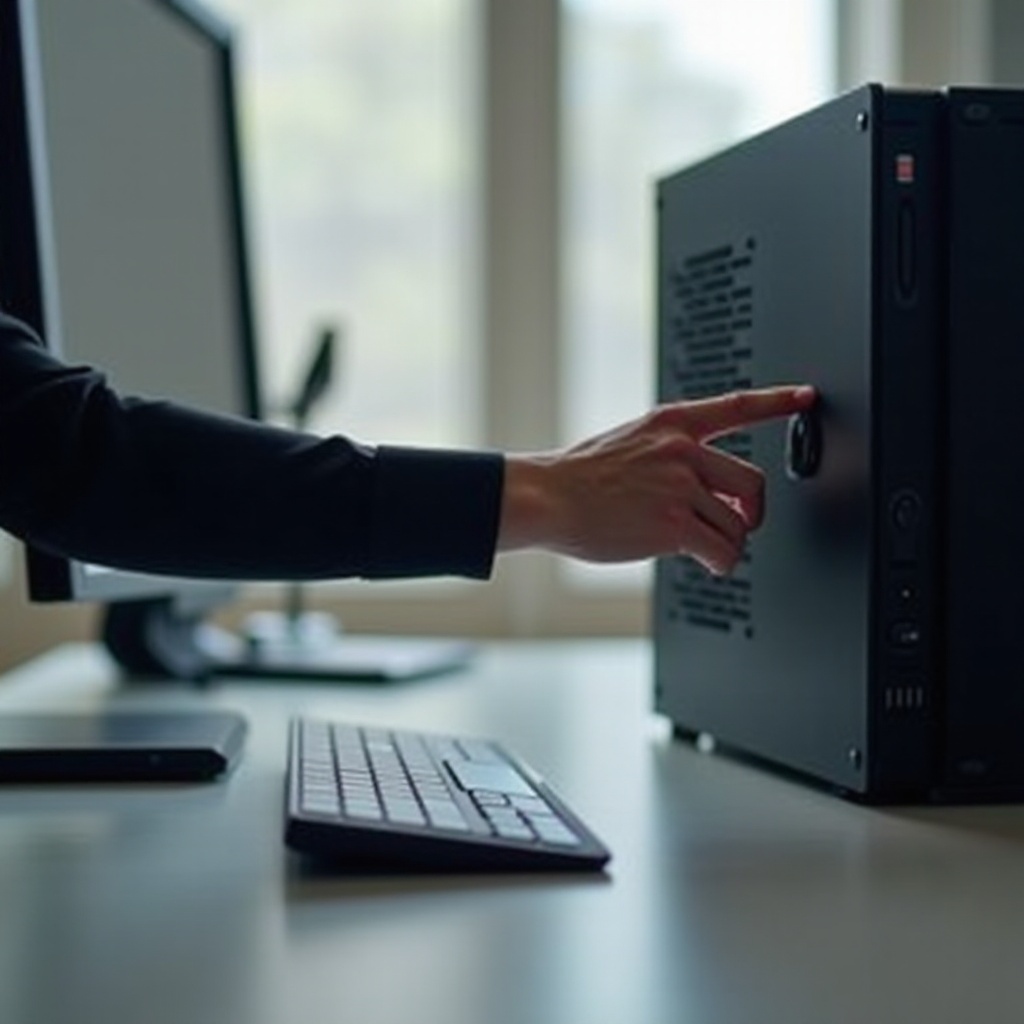Introduction
Experiencing computer freezes can be frustrating, especially when you have important work to save. Knowing how to force shut down your computer can be crucial at such times. This guide provides detailed methods for Windows, Mac, Linux, and Chromebook systems. We’ll also discuss potential risks and how to mitigate them.

Understanding the Risks
Force shutting down your computer bypasses the normal shutdown procedures. This can lead to potential risks such as data loss and corruption. Unsaved work in open applications will be lost, and system files could become corrupted, leading to more severe issues. Repeatedly forcing a shutdown may also wear out components faster. It’s crucial to understand these risks to use force shutdown methods responsibly.
Methods to Force Shut Down a Windows Computer
When your Windows computer becomes unresponsive, here are a few methods to force it to shut down:
Using the Power Button
- Press and hold the power button on your computer.
- Keep holding it for about 5-10 seconds until the screen goes black.
- Release the button once the computer turns off.
Keyboard Shortcuts (Ctrl + Alt + Delete)
- Press
Ctrl + Alt + Deletetogether. - Select the
Powericon at the bottom right corner. - Choose
Shut downfrom the options.
Task Manager Method
- Press
Ctrl + Shift + Escto open Task Manager. - Select the unresponsive application and click
End Task. - If necessary, navigate to
File>Run new task, typeshutdown /s, and hitEnter.
Command Prompt (CMD)
- Press
Win + Rto open the Run dialog. - Type
cmdand pressEnter. - In the Command Prompt, type
shutdown /s /f /t 0and pressEnter.
These methods provide you with various ways to force shut down a Windows computer when it is unresponsive.
Methods to Force Shut Down a Mac Computer
Mac computers also have their unique methods for a force shutdown. Here’s how you can do it:
Using the Power Button
- Press and hold the power button on your Mac.
- Continue holding it until the screen goes black and the computer powers off.
Keyboard Shortcuts (Command + Option + Esc)
- Press
Command + Option + Escsimultaneously. - Select the unresponsive application from the list.
- Click
Force Quit.
Activity Monitor Method
- Open
Activity Monitorfrom theApplications>Utilitiesfolder. - Find the unresponsive process and click the
Xbutton to force quit. - If necessary, click the Apple logo in the top left corner and select
Shut Down.
These methods ensure you can force shut down your Mac when it is necessary.

Force Shut Down on Other Operating Systems
Different operating systems have their own specific methods to perform a force shutdown.
Linux Systems
- Open a terminal window using
Ctrl + Alt + T. - Type
sudo shutdown nowand pressEnter. - If required, enter your password to proceed with the shutdown.
Chromebook Methods
- Press and hold the power button for about 6 seconds.
- The screen will turn off, and the Chromebook will shut down.
These methods are tailored to Linux and Chromebook users, ensuring they have the knowledge to handle unresponsive systems.
Preventing Future Issues
Preventing the need to force shut down in the future involves a few proactive measures:
Regular System Maintenance
Perform regular maintenance tasks such as disk cleanup, defragmentation, and removing unnecessary software. This helps keep your system running smoothly.
Closing Unresponsive Programs
Keeping an eye on the applications you run and promptly closing unresponsive ones can help. Use Task Manager or Activity Monitor to keep tabs on your system’s performance.
Updating System Software
Ensure that your operating system and applications are up to date. Updates often include performance improvements and bug fixes that can help prevent unresponsiveness.

Conclusion
Forcing a shutdown on your computer should be a last resort when all other methods fail. By following the methods outlined in this guide for Windows, Mac, Linux, and Chromebook systems, you can shut down your computer safely when necessary. Remember to understand the risks involved and take preventive measures to avoid frequent force shutdown scenarios.
Frequently Asked Questions
Are there risks associated with forcing a shutdown?
Yes, forcing a shutdown can lead to data loss, unsaved work disappearing, and potential corruption of system files. It should only be done when absolutely necessary.
Can forcing a shutdown damage my computer?
While occasional forced shutdowns are unlikely to cause significant damage, frequent use of this method can strain your computer’s hardware and reduce its lifespan.
What should I do if my computer frequently requires a force shutdown?
If you find yourself constantly needing to force shut down, it might be time to investigate underlying issues. Consider updating your software, running system maintenance checks, and seeking professional help if the problem persists. Regular cleaning of your system files and keeping your hardware free from dust can also improve performance issues leading to frequent unresponsiveness.
